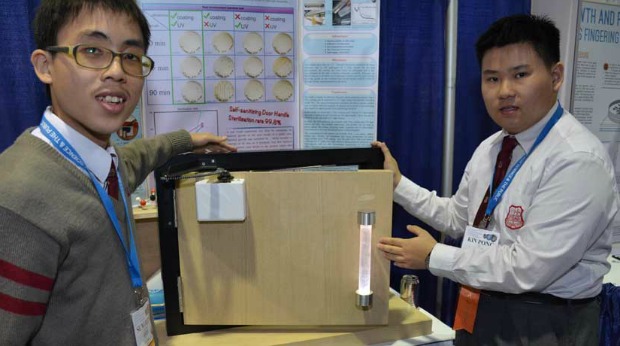
Breaking News
 Ellen DeGeneres Planning to Crawl Back to the United States After Fleeing to the UK Following...
Ellen DeGeneres Planning to Crawl Back to the United States After Fleeing to the UK Following...
 Costco Sues For Refunds Before Supreme Court Rules On Tariff Legality
Costco Sues For Refunds Before Supreme Court Rules On Tariff Legality
 America's Crime Syndicate Government: Profiteering, Protection Rackets & a Pay-to-Play Presidenc
America's Crime Syndicate Government: Profiteering, Protection Rackets & a Pay-to-Play Presidenc
Top Tech News
 Build a Greenhouse HEATER that Lasts 10-15 DAYS!
Build a Greenhouse HEATER that Lasts 10-15 DAYS!
 Look at the genius idea he came up with using this tank that nobody wanted
Look at the genius idea he came up with using this tank that nobody wanted
 Latest Comet 3I Atlas Anomolies Like the Impossible 600,000 Mile Long Sunward Tail
Latest Comet 3I Atlas Anomolies Like the Impossible 600,000 Mile Long Sunward Tail
 Tesla Just Opened Its Biggest Supercharger Station Ever--And It's Powered By Solar And Batteries
Tesla Just Opened Its Biggest Supercharger Station Ever--And It's Powered By Solar And Batteries
 Your body already knows how to regrow limbs. We just haven't figured out how to turn it on yet.
Your body already knows how to regrow limbs. We just haven't figured out how to turn it on yet.
 We've wiretapped the gut-brain hotline to decode signals driving disease
We've wiretapped the gut-brain hotline to decode signals driving disease
 3D-printable concrete alternative hardens in three days, not four weeks
3D-printable concrete alternative hardens in three days, not four weeks
 Could satellite-beaming planes and airships make SpaceX's Starlink obsolete?
Could satellite-beaming planes and airships make SpaceX's Starlink obsolete?
Students Invent Door Handle for Public Bathrooms That Can Clean and Sanitize Itself

Now you can grab that public bathroom door handle without fear—a solution to the conundrum of how to gracefully exit after washing your hands is finally here.
The two student inventors are among 20 finalists selected for the international James Dyson Award for their "illuminating" solution to bacteria-ridden doorhandles.
Despite the use of sanitizers and routine cleaning of public areas, the bathroom door handle presents a unique challenge. University of Hong Kong graduates Sum Ming Wong and Kin Pong Li set out to design a solution that was self-powered and avoided the chemical cleansers that are sometimes harmful to human health.
"Nowadays, people use chemical cleaning materials to clean up public areas, but it is both easy to wipe off and harmful to the human body," said the inventors. "Our design has high durability and [is] effective."
By using materials that cost only $13 per door handle, they combined titanium dioxide powder and ultraviolet LED lights to effectively develop a door handle that cleans itself.
Not only that, they also engineered a small gear box and generator to be hooked up to the door itself, making it self-powered. The kinetic energy generated from opening and closing the door provides enough electricity to keep the handle lit and functional.
The handle kills bacteria by the action of a thin titanium dioxide film on the outside of the clear handle. The chemical is known to be a photo-catalyst, so when the UV lights activate the coating, it reacts to water or oxygen to create hydroxyl radicals that decompose the bacteria. It killed 99.8% of bacteria in lab tests.

 Britain Is Lost
Britain Is Lost
 First totally synthetic human brain model has been realized
First totally synthetic human brain model has been realized Mach-23 potato gun to shoot satellites into space
Mach-23 potato gun to shoot satellites into space

